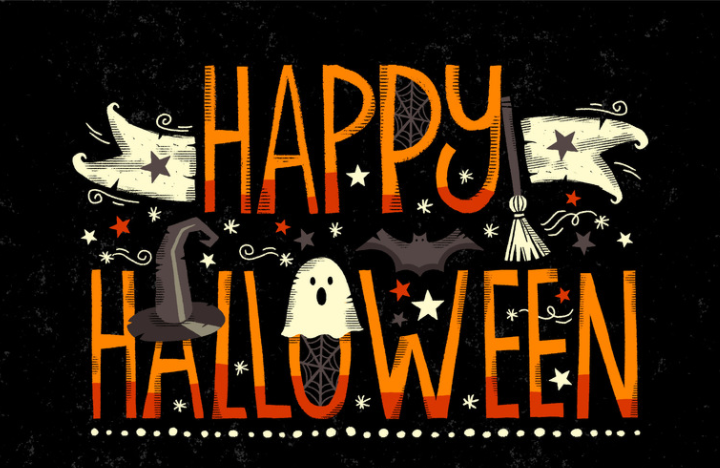Halloween is a frightfully fun October holiday celebrated by many people all over the world. It falls on the 31st of October each year because the ancient Gaelic festival of Samhain, which is considered the earliest known root of Halloween, occurred on this day.
Halloween marked a pivotal time of year when seasons changed, but more importantly, observers also believed the boundary between this world and the next became especially thin at this time, enabling them to connect with the dead. This belief is shared by some other cultures; a similar idea is mentioned around the Jewish holiday of Yom Kippur, which also typically occurs in October and involves saying prayers for the dead. This is also where Halloween gains its “haunted” connotations.
You already know that Halloween takes place on the last day of October, but here’s something you might not know: The word itself literally means “hallowed evening”, and was previously known to early European celebrators as all Hallows’ Eve. All Hallows’ Eve (October 31) and all Saints’ Day (November 1) both paid homage to saints (“hallows” = Saints). The name was eventually shortened to “Halloween,” which we know and love to this day.
Halloween is one of the oldest holidays. Although it stems from religious beliefs, it is celebrated today as a cultural holiday by people from different religious backgrounds. In the United States, Halloween is celebrated on the 31st of October and is popular among children and adults.
Telling horror stories and horror movies are popular entertainment, as well as carving pumpkins to make jack-o-lanterns. Children dressed in costumes go trick-or-treating, which involves going door to door, knocking and calling out “trick or treat,” and receiving candy in return. Canada and Ireland both have similar traditions.

Mexico and other Latin American countries celebrate Día de Los Muertos, the Day of the Dead. The celebration lasts three days, from October 31st to November 2nd, and is designed to honour the dead. Many families construct an altar in their homes to honour their late family members and make a feast with their favourite dishes for their spirits to enjoy. Food and candy are often made in the shape of skulls and skeletons for the celebration.
In some European countries and many others worldwide, the popularity of Halloween has increased in the last 30 years. Countries like Greece and Poland have seen more young people engaging in pumpkin carving and attending costume parties.
Asian countries like China celebrate Halloween (Teng Chieh) by leaving drinks, food, and spirit money as offerings to the dead and lighting lanterns to guide spirits to the next life. It is believed that spirits are sometimes reincarnated into scary creatures and seeing one is considered very bad luck. So during the festival, locals visit Buddhist temples and make paper boats to carry their loved ones and other spirits onwards. The Hungry Ghost Festival is also one of the biggest annual events in Vietnam.
Although in Sri Lanka we do not spend this holiday in grandeur, it is a favourite day of the youth. Friends hold Costume parties where they dress up in spooky and fancy costumes and spend the evening together having fun. Horror movie marathons are also a must of this day.
This holiday has gained popularity in many countries during the last few years and it will continue to be one special day in the calendar where everyone around the world goes a little mad and spooky and collect fun memories that last a lifetime.
Written by Rtr. Himeth Sewmin


0 Comments